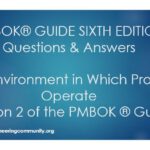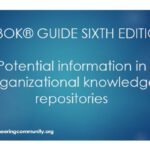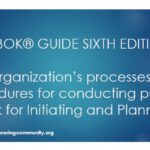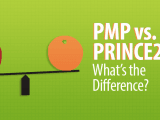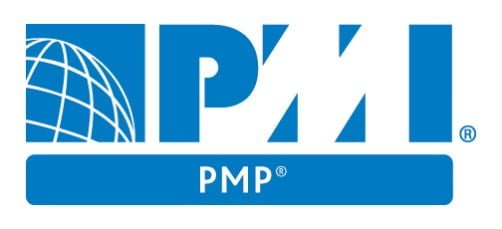
Common mistakes of PMP® Application
6 January 2019Table of Contents
Common mistakes of PMP® Application
PMI takes great care to uphold the quality of its Certifications by establishing high standards in working and educational requirements of certification applicants.
The PMP® Exam Application is often considered as a mini project in itself as Aspirants would need to take much time and efforts to get the application form completed and submitted, not to mention the possibility of having to deal with the dreaded Audit. Before even beginning to fill in the application form, Aspirants would need to understand common mistakes of failing the PMP® application with a view to accelerating and smoothing the application process (by noting these, You will also be well prepared for the Audit too).
Before going into details of the common mistakes, every Aspirants should note the no. 1 mistake in submitting the application is not to become PMI Member before hitting the form submit button — since the saving in exam fee for PMI membership is more than the annual membership fee of PMI.
Common Mistakes in Documenting Working Experience
PMI requires Aspirants to have accumulated a certain amount of hours of working experience before applying for the exam.
On the Application Form, you will be asked to fill in the number of hours for each project you have taken part in according to the project management process groups (initiating, planning, directing, monitoring & controlling and closing the project as defined in the PMBOK® Guide) according to the following template:
- Title of project
- Duration and nature of project
- Supervisor details
- No. of hours spent in each process group
- A brief description of the project including objectives, key deliverables, project outcome, as well as your personal role (in less than 500 characters)
The total amount of working experience hours should be more than the minimal amount specified for different levels of formal education. Also each Aspirants should at least have some experience in each of the five process groups.
Common mistakes when filling in the Application Form include:
- Include every project you have taken part in from Day 1 of your working life
— include barely sufficient number of projects to fulfil the minimum amount of experience hour is highly advised as this will save you much efforts in verifying your working experience; also the experience submitting should be within the past 7 years. - Include many small projects
— if you have worked on large and small projects over the past few years, try to select the large project first to reduce the complexity of your Application (and save you much efforts in PMI Audit). If you are the unfortunate those who work on only small project, you should try to document all your projects as organized as possible. - Not making efforts to collect truthful information of your projects
— every Aspirants to try hard to gather all the relevant information to their working experience for each project (in particular the project schedule and plan, etc.). Before filling the Application From, you should have collected all the relevant information so that you can calculate the number of hours for each project management process group as accurately as possible. You are also highly advised to keep these information in a folder to prepare for the Audit. Remember to take the time to document your working experience as clear as possible and ask for consent from your supervisors on the documented hours. - Trying hard to follow some insiders’ secrets to fill in the Application Form to avoid the Audit
— the PMI Audit is random in nature (proof: I got audit request for both my PMP® and PMI-ACP® Certification Application), there is nothing one can do to avoid or reduce the likelihood of being selected for the PMI audit. But the chance of getting PMI audit requests is often considered low, maybe around 10% or less (though the exact amount is not disclosed by PMI). - Include working experience during which you are not working on project management (e.g. operation)
— since PMP® is about project management, the working experience submitted should include only those hours you are managing or directing project work only. Though it is not necessary to carry the functional title of “project managers”, you will pay special attention to report only the portion of your working experience that is directly related to project management. - Fill in the supervisors details before contacting them
— if you are not selected for an audit, this should not be an issue; otherwise, you should contact your supervisor first to agree on the number of project management hours to be reported in the PMP® Application. This will also ensure that you can reach your supervisor (past or present) in case you would need to ask them to sign the experience verification form for the Audit. Make sure you can contact the person you named as the supervisors for your projects by emailing or phoning them. PMI doesn’t require your immediately supervisor as the only person to be named on the application, in case you cannot find them, you can try to find others who have intimate knowledge of your role in the project (can be the CEO, COO, manager, supervisor, colleagues, etc.). If all efforts fail, it is better for you NOT include the project in your application or you would risk failing the PMI Audit. - Not making full use of the 500 characters for the project description
— 500 characters is not too much especially when you are required to fill in the project including objectives, key deliverables, project outcome, as well as your personal role in the project you mention in your Application. PMI would just rely on this piece of information to understand whether your experience is considered suitable for working experience hours. Try to make full use of the characters allowed; otherwise PMI will ask you to re-submit (maybe through email) a more detailed project description during the Application Completeness Review process (which is before the Audit). - Crash the project schedule too much too often
— PMI advocates work-life balance by recognizing only 40 hours per week of working. Therefore, for project spanning 12 weeks, you should only document at most 480 hours and no more. If you have read the PMBOK® Guide, you should understand that crashing is just a work-a-round and should not be a “planned” activity. - Fill in the Application before reading the PMBOK® Guide
— PMI has laid out its concept of project and project management in the PMBOK® Guide, and your Application Form (in particular the project description part and the number of hours for each process groups) is judged against the definition from the PMBOK® Guide. If you get to know the PMOBK Guide well, there will be less discrepancies in the understanding of your project management terms vs PMI’s. You are also welcome to show off your understanding of project management in PMI’s point of view by making use of project management terms found in the PMBOK® Guide.
Common Mistakes in Counting 35 Contact Hours of Project Management Education
The requirement for the 35 Contact Hours for the PMP® Certification is quite simple and clear:
- The 35 Contact Hours of project management education should be any education on project management provided by any formal education provider taken anytime before the PMP® exam, e.g.
- part of University curriculum (only count those hours on project management education)
- bootcamps
- online PMP® courses — all online courses should include a formal end of course assessment to judge whether the student has actually studied the course
- There is no need to have the curriculum based on the PMBOK® Guide nor PMP® Certification.
- Not limited to courses provided by a PMI Registered Education Provider (R.E.P.) — though PMI has pre-approved courses offered by PMI R.E.P. to fulfil the contact hour requirement.
Common mistakes when counting 35 Contact Hours include:
- Not Finishing the 35 Contact Hours before submitting Application
— PMI requires the 35 Contact Hours to be gained before Application Form is submitted (i.e. you should have gotten the Course certificate before applying for PMP®) - Reading the PMBOK® Guide for 35 Hours by self-study
— The 35 Contact Hours should be gained through a formal course offered by a formal education provider. Self-study is not considered a possible way to earn the required education. - Taking online project management courses without assessments
— It is one of the requirements for online courses that a formal end of course assessment should be included before giving out the course certificates to the students. All courses provided by PMI R.E.P. would include assessments as PMI has communicated well with them; however other education providers would just miss this. When in doubt, always choose courses that are provided by PMI R.E.P. (you have the added benefits of being well prepared for the exam). - Including courses that are not directly related to project management
— If you are not taking courses by PMI R.E.P., you will also need to provide the course outline if you are selected for an audit. PMI will try to judge whether the whole course or just some portions of it is/are about project management. You must try to make sure the course is all about project management in PMI’s eyes.
Common Mistakes in Responding to PMP® Audit
According to PMI’s Customer Care there are three ways that you can fail an audit: No Fault, Non-Compliance and Fraud. Let’s look at them in detail. First we’ll see what PMI writes for each, then we’ll give you an interpretation and our recommendations.
No Fault on the PMP® Applicant
Cannot verify education or experience through no fault of their own – No suspension period and cannot reapply until candidate can provide the experience hours and document them.
In other words, the PMP® Applicant cannot provide the proof of their project management education (35 contact hours) or experience upon request
Non-Compliance to PMI Audit Requests
Candidate chooses not to attempt audit – One year suspension period
If you are audited and you simply have too much going on in your life to participate in the audit, then you can choose not to give any audit responses. Similar to pleading “no contest,” the candidate is subject to a one year suspension period before he/she can apply for the PMP® Exam again.
Intentional Fraud Information Provided in PMP® Application
Providing False Information – Permanently suspended from sitting for PMI exams
PMI will permanently ban Aspirants who provide false information (including making up non-qualified working experiences or faking education certificates) with a view to deceive PMI into believing they meet the requirements of taking the PMP® Exam. Since honesty is an integral quality of every project manager according to the PMI Code of Ethics and Professional Conduct, anyone found providing misinformation will not be allowed another chance to apply for any PMI Certifications. This is the worst kind of punishment for failing the PMI audit.
After understanding these three ways of failing the PMI Audit, Aspirants should take note of the common mistakes for PMI Audit failure as follow:
- Filling in the project management / education experience in the Application Form without any proofs on hand
— since the PMI Audit is time-framed (you need to respond and complete the audit in 90 days), you should be well prepared for the audit in advance by gathering all the required certificates (university/secondary degree and the 35 contact hours) and contacting all your named contacts. This will save you much time in completing the audit. - Not responding Audit request due to incomplete documentations
— even if you cannot submit all the required documentation, verification and certificates requested by PMI, you should still notify PMI about the reasons (e.g. the education provider cannot issue the certificate with 90 days, etc.). There will be not penalty period in this case and once you can get it, you can proceed the application. - Not responding Audit request as the named supervisors cannot be reached
— though it is highly desirable to have the ones named in the Application Form to sign the experience verification forms for you, PMI does not mandate this! In fact, you can ask anyone with intimate knowledge of your project roles to sign the form for you! Just ask any other managers or colleagues to help you out on this and you should be able to pass the audit.
Conclusion
It is hoped that by avoiding these common mistakes in PMP® Application submission, Aspirants can proceed through the Application process as smooth as silk. After passing the application completeness review, paying the exam Fee (and possibly passing the audit), Aspirants will be able to schedule their PMP® Exam time slot and begin the hardcore study for their certification success!


